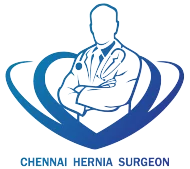Hernia happens when tissue of an organ pushes through a weak spot in the surrounding muscles or connective tissues. Hernia can affect different parts of bodies like Abdomen growing a diaphragm and it can often cause strain or pressure. Surgery can be the common method for treating hernia. Many people also try to identify some non-invasive techniques like yoga for reducing the symptoms.
Yoga can be one of the helpful complementary approaches that can help in managing the hernia symptoms. This also helps since strengthening the abdomen muscles. However can yoga actually cure hernia? This article will provide you with the details regarding the benefits of yoga for people suffering from hernia.
Table of Contents
ToggleYoga really cure hernia honest answer
Honestly yoga cannot cure hernia. Yoga can be useful in management of hernia symptoms and helps in strengthening the muscles around the affected area. However, it cannot be considered a cure for hernia. Usually hernia needs medical interventions like surgery to be completely cured. Yoga can help in reducing some symptoms and prevents the condition from worsening by improving the core strength and flexibility.
Hernia and yoga
An abdomen is the area where many important organs are present. All these organs are protected by muscles in the abdomen. A hernia can happen when these muscles are weak that can produce a gap between the abdominal wall and one part of the internal organs bulges out.
This weakness can be present from birth or may develop due to insufficient physical exercise. However, straining the abdominal muscles by carrying heavy objects, especially in the gym, can create a gap in the abdominal wall and lead to various types of hernia.
Generally hernia is treated by surgery and even after the surgery one has to take measures for avoiding recurrence by slowly strengthening their abdominal muscles said by Dr. Parameshwara CM, the best hernia treatment doctor at SMILES.
If you are a person who is recovering from Hernia surgery or just simply wishes to strengthen your abdominal wall. Then you can try yoga asanas. As the yoga asanas can be the most favorable option in managing hernia, this includes umbilical hernia as well as groin hernia.
How yoga can potentially benefit each type
Yoga normally includes stretching and straining exercises that help in the improvement of overall health.
- The inguinal hernia that normally occurs in the groin area where the intestine or bladder will protrude through the abdominal wall. By gentle stretches of yoga and help in improving the flexibility and reduce the muscle tightness in the lower body. This helps in reducing some pressure.
- In hiatal hernia a part of the stomach will be pushed through the diaphragm. Some specific breathing techniques like pranayama can help in reduction of acid reflux and reduce the discomfort in the chest area.
- Umbilical hernia that happens near the belly button. Umbilical hernia can be benefited from the yoga process. As it can help in strengthening the core muscles without causing much strain to the abdomen.
- Incisional hernia the captains after the surgery. Here the tissues will protrude through the incision site. Yoga can help in gentle recovery by slowly strengthening the muscles that are surrounding the incision.
- In femoral hernia yoga can help in stretching and strengthening the lower abdominal muscles and upper thighs. This can help in improving circulation and also reducing discomfort.
Yoga Poses for Hernia
Uttanpadasana (Raised leg pose)
Raised leg pose can help in strengthening the abdominal muscles. If you are recovering from hernia surgery then right practice single leg rise three times a day but it is only up to 60 degrees and avoid training the abdomen.
Steps:
- Lie down with your arms on the side
- Breathe in slowly, raise your leg upwards without bending your knees, then breath out and lower it.
- Your lower back must be closer to the floor and do the exercise 5 to 6 rises for each leg.
- Do this for 2 minutes
Vajrasana (Diamond Pose)
This pose can be considered as the best yoga pose for curing hernia. Vajrasana, also called a diamond shaped pose, can help by compressing the inguinal canal which will prevent the protrusion of the abdominal organ.
Steps:
- Sit on the flat floor and fold both of your legs backwards and place your feet under your hip.
- Then keep your waist, spine and head straight with closed eyes.
- Place both the hands on your knees and keep the elbow straight.
- Then take a deep breath and hold the pose for 15 to 30 seconds.
- Repeat for 5 to 6 times.
Sarvangasana (Shoulder stand)
Shoulder stand pose can help in reduction of abdominal pressure and also prevents abdominal content protrusion. When practiced with proper alignment, sarvangasana also called the shoulder stand can help in strengthening your upper body, legs and abdominal muscles.
Steps:
- Light down in a supine position and raise both of your legs slowly upwards and bring it to 90 degree angle.
- Then bring both the legs towards the head by raising the buttocks.
- Raise your leg, chest and abdomen and finally form a straight line.
- Breathe, inhale slowly and place the palm on the back for your support and hold this post for 15 to 20 seconds.
Naukasana (Boat Pose)
Bote poses help in improving the circulation of blood and oxygen in the abdominal area. This is good for the people who try to strengthen their abdominal wall and prevent recurrent hernias.
Steps:
- Lie down with your legs together and arms on your sides.
- Keep your arms straight and fingers stretched out towards your toes.
- Breathe in and breathe out then lift your chest and feet off the floor by stretching your arm towards your feet.
- Make sure that your body weight will rest on your buttocks completely.
- Hold your breath and remain in this position for 5 to 10 seconds.
- Then breathe out slowly and relax.
- Repeat this for 3 to 4 times daily.
Poses to Avoid
Any poses that will need you to put pressure on your abdomen or stomach region must be avoided. Yoga positions that must be avoided are,
- Adho Mukha Svanasana (downward-facing dog like position),
- Uttanasana (standing forward bend),
- Trikonasana (Open Triangle Pose),
- Backbend Asanas like Baddha Konasana,
- Bhujangasana (Cobra pose),
- Salabhasana (Locust Pose),
- Dhanurasana (Bow Pose) etc.
These asanas can be strenuous and can aggravate your hernia. These poses have the possibility of tearing your muscles more and reducing the blood supply to the hernial content or sometimes can also completely cut off the blood supply to the hernia content if we spokes are too extreme and strenuous.
Precautions Before Starting Yoga
Before starting, you have to consider certain precautions for making sure that you are safe and also avoid aggravating the condition.
- Consult your doctor
- Avoid straining by excessive pressure on abdomen
- Start slowly
- Listen to your body
- Focus on breathing
- Try using yoga props like straps, blocks and bolsters for supporting your body
- Modify the poses according to your comfort level
- Stay hydrated
- Avoid inverting your body
- Always to properly warm up and cool down.
Sample Yoga Routine
Here are some yoga poses that can be safe for persons suffering from hernia. But it is important to check with your health care provider before starting any new exercises.
- Child’s Pose (Balasana)
- Cat-Cow Pose (Marjaryasana-Bitilasana)
- Bridge Pose (Setu Bandhasana)
- Legs Up the Wall Pose (Viparita Karani)
- Wind-Relieving Pose (Pavanamuktasana)
- Seated Forward Bend (Paschimottanasana)
- Corpse Pose (Savasana)
Breathing Techniques
Breathing techniques that can be used for hernia symptoms mangement.
Pranayama is a breathing technique that can help in improvement of lung capacity, reduces stress and also reduces the pressure in the abdominal level. Some of the breathing technique are,
- Anulom Vilom (Alternate Nostril Breathing)
- Kapalbhati (Skull-Shining Breathing)
- Bhramari (Bee Breathing)
Additional Lifestyle Tip
Breathing techniques that can be used for hernia symptoms mangement.
Pranayama is a breathing technique that can help in improvement of lung capacity, reduces stress and also reduces the pressure in the abdominal level. Some of the breathing technique are,
- Anulom Vilom (Alternate Nostril Breathing)
- Kapalbhati (Skull-Shining Breathing)
- Bhramari (Bee Breathing)
When to Seek Medical Help Instead of Practicing Yoga
- If there is any sudden or severe pain at the hernia site. This is because there may be strangulated hernia where the supply of blood to the herniated tissues is cut off. This condition is very dangerous as it can cause tissue death in hours.
- If there is any persistent pain or discomfort regardless of the intensity, you must consult a doctor for a hernia evaluation. The ongoing pain can be one of the indicators that hernia is growing or becoming more of a problem, as that can lead to more severe problems if it is not addressed.
- If there is any nausea, vomiting or an inability to pass the gas and have any bowel movements then it may be due to bowel obstruction.
- Redness or swelling around the area of hernia can indicate the infection or other complication
- Fever can also show the sign of infection and needs immediate medical attention.
Conclusion
Yoga can be a complementary approach that helps in management of hernia symptoms but it cannot be considered as a cure. With proper asanas and breathing techniques along with the adjustment in the lifestyles yoga can help in reduction of discomfort and also prevents further strain and promotes overall well being.
Dr. K. Amilthan MBBS., MS., FMAS., FALS.
Heal Your Hernia Now:
- 20+ Years of Experience
- 1,000+ Surgeries
Your Journey to Wellness Begins with us.
FAQ's
Hernia cannot be treated by yoga, but it can help in reducing the symptoms and preventing the strain on the affected area. Surgery can be considered a complete treatment method.
Alternate nostril breathing can be considered a beneficial pranayama technique for hernia. As this can help in balance in the energy and reduce the stress without putting much pressure on the abdomen.
Yoga and lifestyle changes can help in managing hernia symptoms. But most of the hernias must get medical intervention to be completely cured. If you want to try alternative treatments, try to consult the doctor.

Dr. Amilthan
Dr. Amilthan is a renowned laparoscopic hernia surgeon based in Chennai, with over 20 years of experience in general surgery. He completed his MBBS and MS in General Surgery at Kilpauk Medical College and Government Royapettah Hospital in Chennai.
- All Posts
- Hernia Blog

Which Doctor should you consult for Hernia? You can Consult a general surgeon or a hernia specialist for evaluation and...

A hernia occurs when an organ or any other part of your body pushes through the muscle and surrounding tissue...

An inguinal hernia occurs when the organs push through and bulge against the weak muscles of the abdomen. An effective...

Whether you have a hernia or appendicitis, the main symptom you will experience is stomach pain. So, it might be...

A hernia is a bulge or swelling that happens when an organ or tissue pushes through a weak muscle and...

Hernia Meaning & Hernia Definition The term “hernia” means “rupture” in Latin. A hernia is a condition where an organ or other body...

